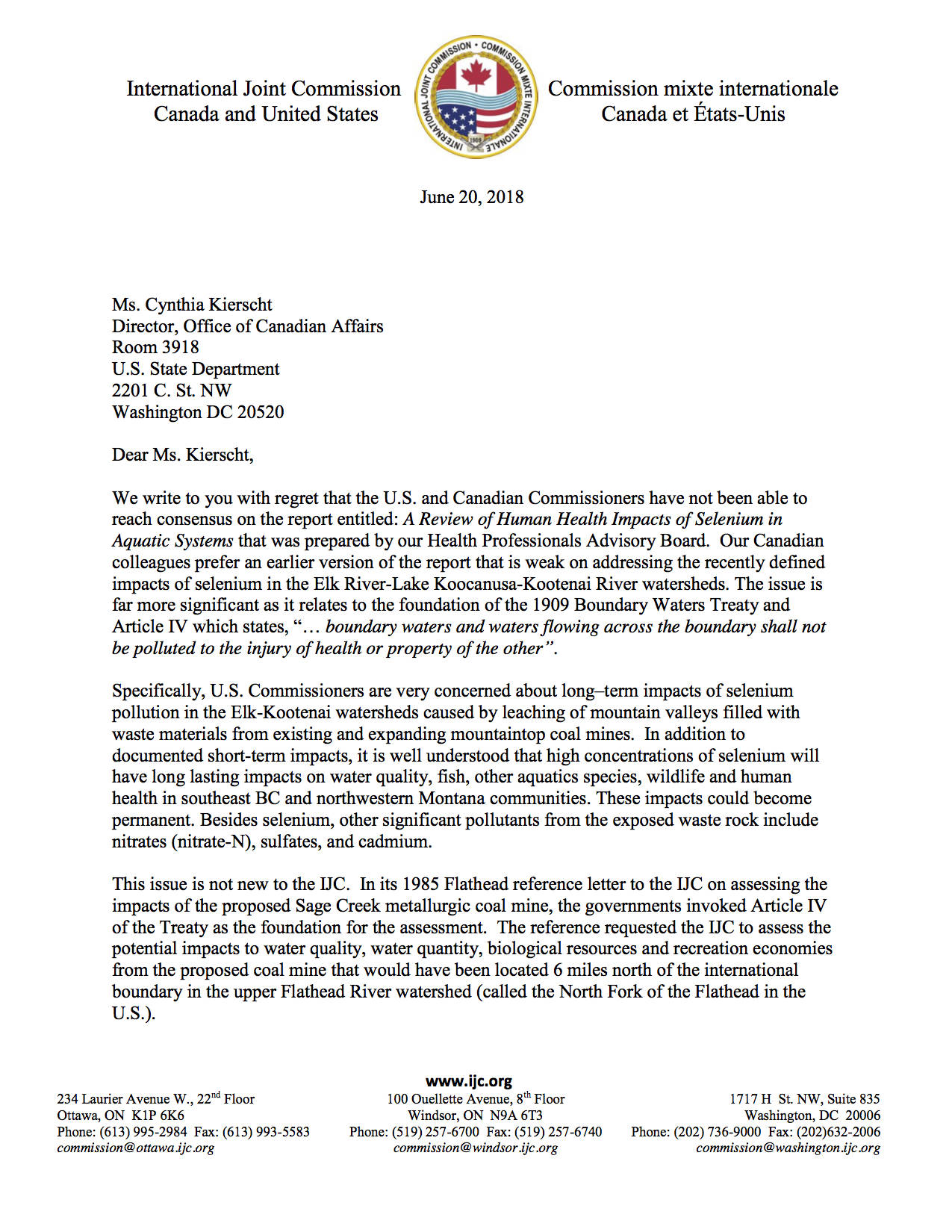An Elk Valley conservationist has put the onus back onto the B.C. Government to enforce regulations and ensure water quality is maintained on both sides of the U.S.-Canada border.
It comes after two U.S. representatives on the International Joint Commission (IJC) went public with their concerns about Canadian governments’ failure to address the ongoing flow of mining contaminants from Elk Valley coal mines into transboundary waters.
In a letter to the Department of State, IJC U.S. Section Chair Lana Pollack and U.S. Commissioner Rich Moy said increasing levels of selenium in the Elk River-Lake Koocanusa-Kootenai River watersheds were a liability to both countries and could be a violation of the 1909 Boundary Waters Treaty.
As well as making their letter public, the U.S. Commissioners also released an IJC report on the human health impacts of selenium in aquatic systems, which they claimed their Canadian colleagues were unwilling to endorse.
“To do that is unusual and certainly expresses their level of frustration, probably with Canada and British Columbia as the regulator of water quality in this case for the province of B.C. in Canada,” said Wildsight Elk Valley Conservation Coordinator Randal Macnair.
The situation was foreseen by the B.C. Auditor General Carol Bellringer, who in 2016 conducted an assessment of compliance and enforcement of the mining sector.
“She basically said this is coming and it’s happening, and she was very critical of the province at that time, two and a half years ago,” said Macnair.
“It’s not as if there weren’t warnings for the regulator.”
The IJC letter brings to light recent exceedances at the Koocanusa reservoir as well as data from Teck, which shows selenium levels are now 70 times higher in the Elk and Fording Rivers as compared to the Flathead.
Macnair said selenium levels continued to rise, despite “tremendous” investment by the mining company.
Teck recently announced it expects to invest in the range of $850 to $900 million over the next five years on construction of water treatment facilities as part of implementing the Elk Valley Water Quality Plan.
However, there are currently no active water treatment plants in operation at Teck mines in the Elk Valley.
The company is trialing other, more passive technologies and plans to reopen the controversial West Line Creek Active Water Treatment facility later this year.
Located at Line Creek Operations near Elkford, the plant has encountered a series of challenges, including a fish kill in 2014, which resulted in environmental charges against Teck.
A new facility at Fording River has also experienced delays and won’t be operational until 2020, one year later than planned.
Macnair said it was incumbent upon the provincial and federal governments to enforce permits and targets set in Elk Valley Water Quality Plan.
“The province of B.C. and the federal government, it’s their responsibility to ensure the health, and safety of citizens and the environment,” he said.
“At this point in time, I think they really need to step it up and it’s ironic that the Americans are ringing this bell because the B.C. Government should be front and centre.”

